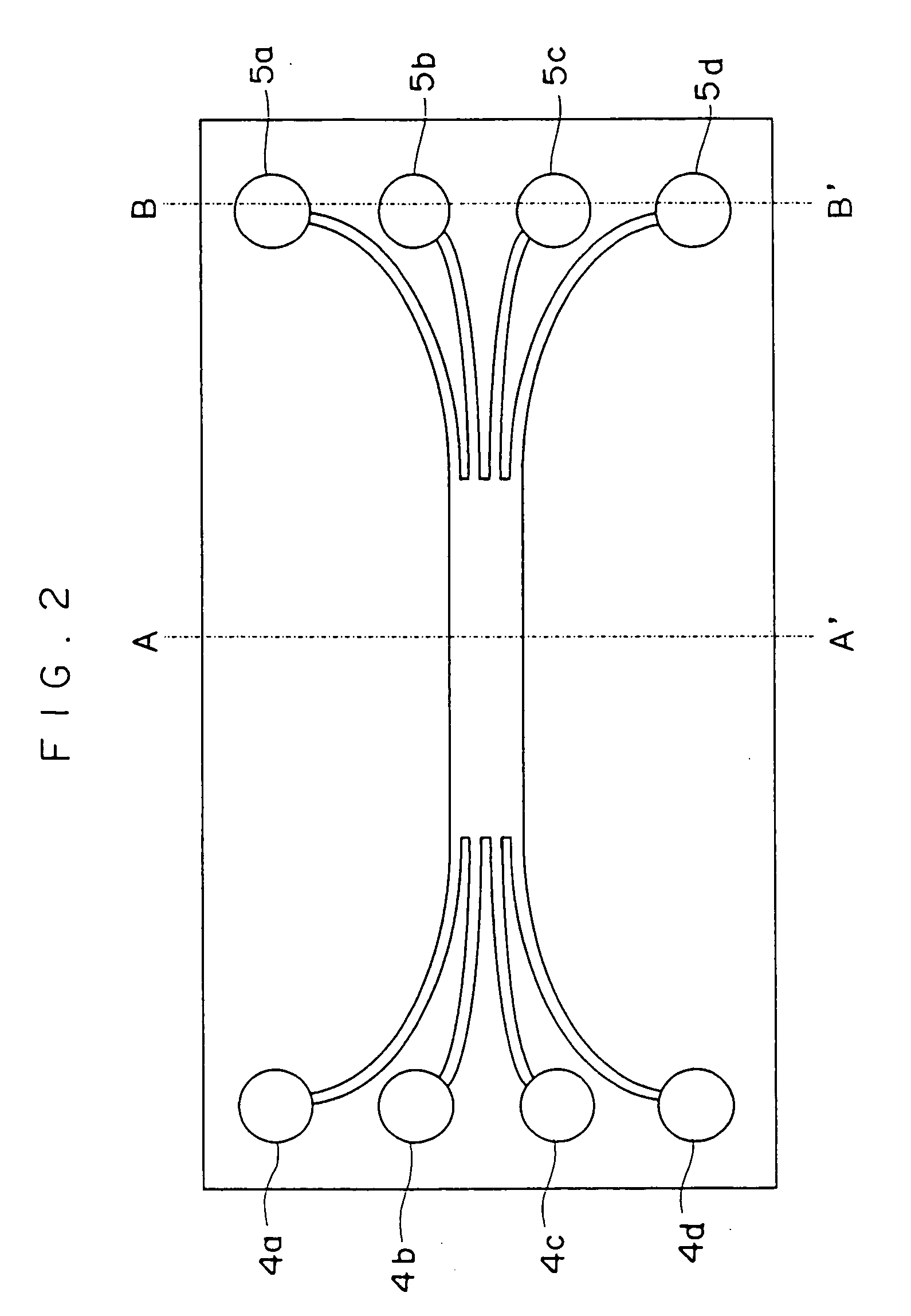Method for producing polymeric optical waveguide and device for producing the same
a technology of optical waveguides and polymeric optical waves, which is applied in the direction of dough shaping, manufacturing tools, instruments, etc., can solve the problems of high cost of methods (2) and (3), accuracy of core diameter, and low cost of polymeric opticals, so as to reduce waveguide loss and high precision. , the effect of low cos
- Summary
- Abstract
- Description
- Claims
- Application Information
AI Technical Summary
Benefits of technology
Problems solved by technology
Method used
Image
Examples
example 1
[0132] A thick film resist (SU-8, manufactured by Microchem Inc.) is applied to the surface of a silicon substrate having a diameter of 6 inch by a spin coating method. Then, the thick film resist is pre-baked at 80° C., subjected to pattern exposure through a photomask, and developed to form a convex portion having a length of 8 cm. Next, the developed film is post-baked at 120° C. to produce a master plate for forming an optical waveguide core. The master plate has a convex portion corresponding to a 4×4 type star coupler and having a total length of 6 cm. The convex portion has a branch junction and branched portions. The branch junction has a length of 3 cm and the cross-section of each of the branched portions is a 50 μm×50 μm square.
[0133] After n-hexane is applied to the surface of the master plate having the convex portion as a releasing agent, a thermosetting polydimethylsiloxane (PDMS) elastomer (SYLGARD 184, manufactured by Dow Corning Asia) is flowed into the master pla...
example 2
[0141] A mold shown in FIG. 10 is prepared in the same manner as the preparation of the mold used in Example 1, except that a cylindrical through-hole having a diameter of 3 mm is formed at each end of the mold. As a result, two through-holes are formed in total and each through-hole communicates with four branched portions formed at the same end of the branch junction. Thus, the outer end of each branched portion communicating with the corresponding through-hole is a concave end.
[0142] Next, one concave end (one of concave ends communicating with the through-hole 4a shown in FIG. 2) is used as a resin inlet. The concave end is referred to as a concave end X hereinafter. Moreover, a dispenser which has the same structure of the resin supply unit shown in FIG. 9 is used for introducing the resin. The dispenser has a fitting portion which can be fit into the through-hole. The fitting portion has a resin outlet corresponding to the concave end X which serves as the resin inlet. The fi...
PUM
| Property | Measurement | Unit |
|---|---|---|
| diameter | aaaaa | aaaaa |
| diameter | aaaaa | aaaaa |
| edge length | aaaaa | aaaaa |
Abstract
Description
Claims
Application Information
 Login to View More
Login to View More - R&D
- Intellectual Property
- Life Sciences
- Materials
- Tech Scout
- Unparalleled Data Quality
- Higher Quality Content
- 60% Fewer Hallucinations
Browse by: Latest US Patents, China's latest patents, Technical Efficacy Thesaurus, Application Domain, Technology Topic, Popular Technical Reports.
© 2025 PatSnap. All rights reserved.Legal|Privacy policy|Modern Slavery Act Transparency Statement|Sitemap|About US| Contact US: help@patsnap.com



